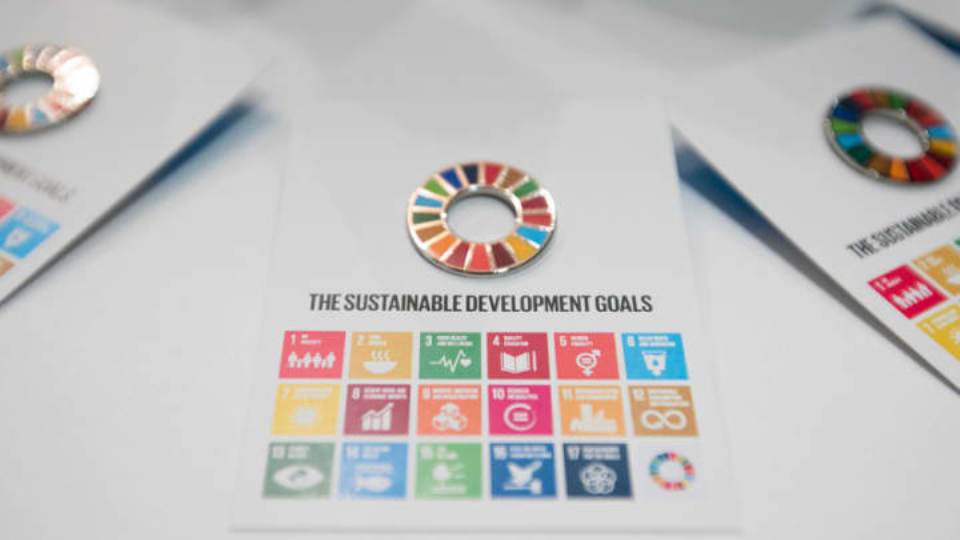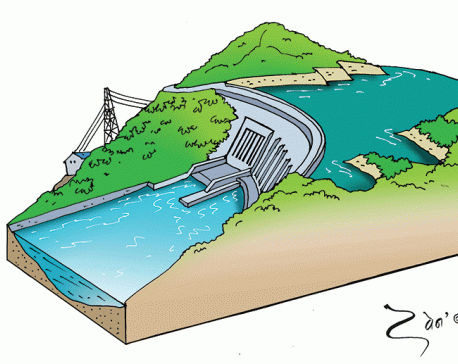
OR
#OPINION
Renewable Energy and Future of Sustainable Development
Published On: March 29, 2023 08:30 AM NPT By: Basu Gautam


Basu Gautam
The author is the President and Founder of Lumbini World Peace Forum, as well as an activist in 1 Million Trees Plantation Drive in Nepal.news@myrepublica.com
More from Author
- The Green Economy: A Win-Win for People and the Planet
- Greening Our Path to Peace: The Link between Environment, Peace, and CSR
- Price of Progress: The Balance between Growth and Sustainability
- Ecological Principles and the Climate Crisis in Buddhism
- Living Sustainably to Ensure a Future of Sustainability
As people across the world become more conscious of the harmful impacts of fossil fuels on the environment, their interest in renewable energy as a sustainable alternative is bound to grow. Renewable energy sources such as solar, wind, and hydropower have the potential to substitute fossil fuels and contribute to the transition to a more sustainable future. Renewable energy fosters social and economic growth, besides solving environmental challenges.
Renewable energy is critical to achieving the United Nations Sustainable Development Goals because it promotes universal access to affordable, dependable, sustainable, and modern energy. Businesses can expand, carbon emissions are reduced, the air is cleaner, and energy security is improved by using renewable energy sources. Renewable energy is critical for promoting inclusive and equitable development. Renewable energy deployment is especially important for developing nations like Nepal, where energy poverty is a substantial impediment to long-term growth. Lack of access to electricity stifles economic growth, education, and healthcare, restricting communities' ability to prosper. Renewable energy technologies provide an inexpensive and accessible solution to energy poverty, allowing communities to develop self-sufficient, resilient, and long-term economies. Moreover, renewable energy has the potential to change energy distribution by lowering reliance on centralized energy grids and encouraging decentralized, community-led energy systems. Renewable energy sources may support inclusive and equitable development by allowing local communities to generate their own energy, decreasing inequities, and strengthening disadvantaged people.
Emerging renewable technologies
Emerging renewable technologies are ground-breaking breakthroughs that have the potential to significantly change the renewable energy market. These technologies are being developed in order to improve the efficacy and efficiency of renewable energy generation, storage, and delivery. Advanced solar photovoltaic (PV) panels, wind turbines, geothermal systems, tidal power, and hydrogen fuel cells are some examples of advancing green technology. Wind turbines with higher efficiency collect more sunlight and create more power than standard panels, for example, by employing bigger blades and better control systems. These technologies are expected to have a substantial influence on both the Sustainable Development Goals and the transition to a low-carbon economy.
Public-private partnership for renewable energy in Nepal
PPPs (Public-Private Partnerships) have become an important tool for boosting renewable energy development in Nepal. The country has enormous potential for renewable energy generation, but challenges such as limited finance, poor infrastructure, and a lack of technical experience are impeding growth. To address these difficulties, PPPs pool the resources and experience of the public and private sectors. In Nepal, successful PPPs include the Upper Marsyangdi-A hydropower project, one of the country's largest private sector hydropower projects, and the Solar Home System program, which offers solar electricity to rural communities. PPPs for renewables in Nepal are also supported by international agencies such as the World Bank and the Asian Development Bank.
Notwithstanding the accomplishments, problems remain, such as the lack of a clear legal and regulatory framework for PPPs and the need to improve government agencies' ability to negotiate and run PPPs successfully. These issues have resulted in PPP implementation delays and uncertainty, deterring potential investors. PPPs have the potential to speed up Nepal's renewable energy growth by supplying much-needed electricity to the national grid and raising the living standard of many households.
Opportunities and challenges
Hydropower is one of the most potential renewable energy sources in Nepal, accounting for more than 80% of the country's energy mix. Nonetheless, Nepal's hydroelectric potential remains mostly untapped, and the government's efforts to boost hydropower capacity confront a number of hurdles. Large hydropower facilities need enormous investment and can have a big impact on the environment and local residents. As a result, the government must balance the economic benefits of hydropower expansion with environmental and social concerns. In this sense, the government should embrace a participatory approach that incorporates local people and stakeholders in decision-making and ensures that the benefits of hydropower development are spread equitably.
Renewable energy, notably solar, wind, biomass, and energy efficiency, has also enormous development potential in Nepal. Because of its proximity to the equator, Nepal gets a significant quantity of solar radiation, making it an ideal location for solar energy development. The government has begun to encourage the use of solar energy in homes and businesses. Although it is still in its early phases of development, wind energy holds immense promise in Nepal's hilly and mountainous regions. In Nepal, biomass energy is plentiful, including agricultural waste and forest leftovers that may be utilized to generate power. Improving energy efficiency in Nepal, in addition to expanding renewable energy sources, may dramatically cut energy consumption and greenhouse gas emissions, notably in the industrial and transportation sectors.
According to renewable energy experts, Nepal confronts considerable obstacles in capturing sustainable energy. The absence of suitable infrastructure to support renewable energy sources, such as restricted grid capacity, old transmission and distribution systems, and insufficient finance methods for renewable energy projects, is one of the primary issues. Additionally, the country's harsh topography and population spread across mountainous regions make developing a solid energy infrastructure challenging, impeding the government's efforts to extend energy access.
Another key difficulty is the intermittent nature of renewable energy sources, notably hydro and solar power, which suffer from supply changes induced by shifting weather patterns. The high capital expenditures involved with renewable energy projects, as well as a lack of investment, are also significant difficulties for the sector. The lack of a dependable regulatory framework and finance channels has discouraged private investment in renewable energy projects, aggravating the funding deficit. To overcome these issues, the government must create a regulatory climate favorable to private investment in renewable energy, prioritize energy storage options, and increase transmission and distribution infrastructure to enhance energy availability in rural areas.
Thus, the use of renewable energy has the potential to promote global and long-term development in Nepal. The transition to a low-carbon economy calls for investments in the creation of renewable technologies, public-private partnerships, and a participatory approach that involves local stakeholders and communities in decision-making. Even though Nepal has a considerable hydropower potential, the government must combine economic growth with social and environmental concerns, as well as turn its focus to other renewable energy sources like solar, wind, and biomass. Notwithstanding the industry's shortcomings, it is necessary to create a legislative framework that promotes private investment and gives energy storage technologies top priority in order to increase the availability of power in rural areas. Governments, business, and civil society must cooperate in order to advance more rapidly.
You May Like This

Parliamentary delegation off to New York
KATHMANDU, July 9: A parliamentary team today left for New York, the USA, to participate in a high-level political forum... Read More...

Something is not right
Nepal’s fast flowing rivers offer a tremendous resource to generate clean renewable energy that can fuel its inclusive growth. That... Read More...

International Day of Charity 2018
In recognition of the significant role that charities and individuals have undertaken to alleviate human suffering and humanitarian crises, the... Read More...





Just In
- Nepalgunj ICP handed over to Nepal, to come into operation from May 8
- Nepal to gift two elephants to Qatar during Emir's state visit
- NUP Chair Shrestha: Resham Chaudhary, convicted in Tikapur murder case, ineligible for party membership
- Dr Ram Kantha Makaju Shrestha: A visionary leader transforming healthcare in Nepal
- Let us present practical projects, not 'wish list': PM Dahal
- President Paudel requests Emir of Qatar to initiate release of Bipin Joshi
- Emir of Qatar and President Paudel hold discussions at Sheetal Niwas
- Devi Khadka: The champion of sexual violence victims



_20240423174443.jpg)










Leave A Comment